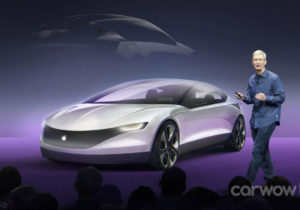
Innovation and new technologies are today’s key driving factors in the development of the energy sector. Innovative solutions coming from various fields of the market allow the energy sector to boost competitiveness, generate extra profit, optimise costs or enhance product and service quality.
“Innovation for Energy Sector. Development Directions in Energy-Related Innovations” is a report published by the Polish Ministry of Energy. One of the goals of implementing innovations in the energy sector pointed out by the report is to increase competitiveness of the Polish power sector. This increased competitiveness stems from multiple factors, such as continuous technological advancement, improved quality of functioning, and optimized use of available resources. To fulfil these assumptions, companies operating in the energy sector may reach out to innovative technologies and applications from various market sectors – from IT to space-tech. “The space sector is an example of an industry field that provides innovative technologies which, once properly adapted, may improve operations of energy companies working with both conventional and unconventional energy sources,” points out Jędrzej Kowalewski, Scanway CEO.
Wind farms to save hundreds of thousands
Examples of technologies developed for the space-tech world that may be feasible in the energy sector are visual and 3D measurement systems, for instance, laser control of the condition of wind turbines. With its knowhow of designing optical solutions for space projects, including construction of the Polish ScanSAT satellite in cooperation with the National Center for Research and Development (NCBiR), Scanway developed such applications for Zakłady H. Cegielski – Poznań S.A. The company’s three-dimension measurement systems enable accurate identification of mechanical faults and deficiencies in the transmission modules of wind turbines. A set of 3D scanners allowed advanced optimisation of the renovation process and made it possible to conduct maintenance work. “Such optimisation of maintenance means shorter outages, which translates into solid figures – in a farm of 50 turbines, savings may amount to even 200,000 PLN a year,” commented Kowalewski. Zakłady H. Cegielski is not the only company using Scanway solutions. The firm also cooperated with PGE subsidiaries. “Our offer targets those entities which see the energy sector through the lens of responsibility, reliability and innovation. Scanway solutions are presented at events for specialists, such as the 5th Energy Congress and the New Industry Congress, where they attracted wide interest,” adds the CEO of the Wrocław-based company.
From space to Poland’s energy market
Technologies developed in space-tech labs may benefit only wind farms. Scanway is also developing a solution for monitoring composition of coal in mines, using a technology which NASA applies on Mars. Such a solution would support the sector of Polish conventional energy, as it indirectly contributes to significant reduction of harmful substances released during the energy generation process.
The energy sector may also be supported by the development of Polish satellites and remote observations. For instance, works on the ScanSAT satellite, which is to be launched to the orbit at the turn of 2020 and 2021, resulted in Scanway developing a precise, miniature optical module which, if mounted on drones, may, for instance, detect gas leaks, monitor the condition of power grids or open-cast mines.
Such use of innovative technologies directly contributes to the modernization of the Polish energy sector, on multiple levels – from coal extraction, through transportation, use management or cost optimisation, translating into implementation of competitive business models in the energy industry. “Integration of the energy sector with other, ostensibly distant fields, like space-tech, and applications of innovations they offer, contribute to higher effectiveness of energy generation and consumption,” comments Jędrzej Kowalewski. They may also contribute to undisturbed functioning of the power grid, which on a macro scale may mean stronger energy security, higher quality of the entire industry and its competitiveness.
Yes for innovation, but how to get it?
Energy innovation may come from solutions created by companies operating on different scales and in different market segments, though the biggest sector players focus on start-ups. For instance, PGE Group established PGE Ventures, a venture capital fund which is to invest in start-ups, while PGNIG created a tech incubator called InnVento to support the development of energy startups and seek new technological solutions for the energy industry. Another example is Enspiron, a subsidiary of Energa, which specializes in developing solutions for today’s energy sector. What’s particularly important to the transfer of technologies between various industry sectors is being open to solutions, even if they are not fully compatible from the start and require some customisation and adaptation. “In our case and in the case of space technologies, this is a successful approach – using the knowhow from the already completed projects, we translate “space” solutions into addressing the needs of the industry, including the energy industry”, sums up Jędrzej Kowalewski. These examples just demonstrate the broadness of using innovation and new technologies in the energy sector and prospects for their dynamic development.
Source: SCANWAY press release




